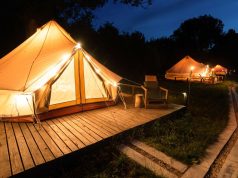Breaking Free from the Checklist: Rediscovering the Soul of Travel

Picture your last vacation. Was it a frantic blur of airports, landmarks, and photo-ops? Did you return home feeling more exhausted than when you left, with a camera full of pictures but a spirit that felt strangely empty? This phenomenon, often called “checklist tourism,” is a modern travel trap. We race from one iconic sight to the next, driven by a fear of missing out, only to miss the very essence of the places we visit. But what if there was a different way? A deeper, more meaningful approach to exploring the world? Welcome to the art of slow travel.
Slow travel isn’t about moving at a snail’s pace; it’s a mindset. It’s the conscious decision to prioritize connection over collection, quality over quantity, and immersion over observation. It means trading a packed, multi-country itinerary for a deep dive into a single region, a single city, or even a single neighborhood. It’s about unpacking your suitcase and your mind, allowing yourself the time and space to truly experience a place, not just see it. This guide is your invitation to step off the tourist treadmill and embark on journeys that are not only more relaxing but profoundly more rewarding and transformative.
The Core Principles of the Slow Travel Mindset
To embrace slow travel, you must first understand its foundational pillars. These principles shift your perspective from that of a consumer of destinations to a participant in a new way of life.
1. Connection Over Collection
The goal is not to collect passport stamps or a checklist of UNESCO sites. The true prize is collecting meaningful connections—with the local people, the culture, the food, and the rhythm of daily life. It’s the difference between snapping a photo of a baker from across the street and spending an hour chatting with them, learning about their craft, and leaving with a warm loaf of bread and a warmer memory. Slow travel encourages you to build bridges, not just view monuments.
2. Quality Over Quantity
The conventional travel wisdom often suggests seeing as much as possible in the limited time you have. Slow travel flips this script entirely. Instead of spending two days in five different cities, a slow traveler might spend ten days in one. This extended stay allows you to move beyond the superficial tourist layer. You’ll discover the best local coffee shop, find a favorite park bench, understand the nuances of the local transport system, and see the city wake up and go to sleep. It’s an investment in depth, which yields far greater returns than breadth.
3. Embracing Serendipity
A rigidly planned itinerary is the enemy of authentic discovery. Slow travel champions the beauty of the unplanned. It’s about leaving entire afternoons free to simply wander without a destination. This is where the magic happens. You might stumble upon a hidden courtyard, get invited into a local festival, or discover a tiny, family-run restaurant that isn’t in any guidebook. By building unstructured time into your schedule, you create space for serendipity and allow the destination to reveal its secrets to you on its own terms.
4. Living Like a Local
The ultimate goal is to blur the line between tourist and temporary resident. This involves a conscious effort to participate in the daily life of the community. Rent an apartment instead of staying in a hotel. Shop at the local farmer’s market and cook your own meals. Use public transportation. Go for a morning run in the local park. By engaging in these mundane activities, you gain an invaluable, unvarnished insight into the culture that no guided tour could ever provide.
Practical Steps to Plan Your First Slow Travel Adventure

Shifting your mindset is the first step, but how do you translate these principles into a tangible plan? Here’s how to structure a slow travel journey.
- Choose Your Destination Wisely: Instead of thinking in terms of countries, think in terms of regions or “bases.” For example, instead of trying to “do” Italy in two weeks, choose to base yourself in Tuscany or Sicily. This allows you to explore the main city deeply while also taking easy day trips to surrounding villages, all without the hassle of constantly packing and unpacking.
- Rethink Your Accommodation: While hotels have their place, they often insulate you from local life. Consider long-term rentals through platforms like Airbnb or Vrbo, or look into home-swapping services. Staying in an apartment with a kitchen immediately changes your relationship with a place. It forces you to navigate a grocery store, interact with neighbors, and establish a daily routine.
- Craft a Framework, Not a Cage: Your itinerary should be a loose framework, not a strict, minute-by-minute schedule. A great rule of thumb is the “one big thing a day” rule. Plan one key activity—a museum visit, a hike, a cooking class—and leave the rest of the day open for spontaneous exploration. This ensures you see the things you care about without succumbing to the pressure of a packed schedule.
- Pack for Living, Not Just Visiting: Your packing list will shift. In addition to tourist essentials, think about items that facilitate a slower pace. Pack comfortable walking shoes, a reusable shopping bag for market trips, a journal for reflection, and perhaps a French press or pour-over for making coffee in your apartment. Pack versatile clothing that allows you to blend in, rather than outfits that scream “tourist.”
How to Practice Slow Travel in the Moment
Once you’ve arrived, the real practice begins. Here are some actionable ways to immerse yourself on the ground:
Master Public Transportation
Taxis and ride-shares are efficient but sterile. Taking the local bus, tram, or subway is a cultural experience in itself. You’ll see how locals commute, overhear conversations, and get a real feel for the city’s geography and social fabric. It’s often cheaper and provides a much richer perspective.
Make the Local Market Your First Stop
Before you visit any museum, go to the central food market. This is the beating heart of any community. Observe the vibrant colors of the produce, listen to the haggling and chatter between vendors and customers, and smell the fresh herbs and baking bread. Talk to the vendors. Ask them what’s in season and what they recommend. Buy some cheese, fruit, and bread for a simple, delicious, and deeply local meal.
Learn the Lingo (At Least a Little)
You don’t need to become fluent, but learning a few key phrases in the local language is a powerful act of respect. Mastering “hello,” “goodbye,” “please,” “thank you,” and “I would like…” can transform your interactions. It shows you value the local culture, and it will often be met with a warm smile and more genuine engagement.
Walk Everywhere
The soul of a city is found in its side streets and quiet alleys, not on its main thoroughfares. Walking is the ultimate tool for slow exploration. Put your phone away and let your curiosity guide you. You’ll discover details you’d miss from a vehicle: intricate door knockers, a whiff of garlic from an open kitchen window, the sound of a piano being played, and a piece of street art tucked away in a corner.
The Transformative Benefits of Traveling Slowly

Adopting a slow travel approach does more than just make for a more relaxing vacation; it fundamentally changes you and your relationship with the world.
- Deeper Cultural Understanding: By living, even temporarily, within a culture, you move beyond stereotypes and gain a nuanced appreciation for a different way of life. You learn that your way is not the only way.
- Reduced Travel Burnout: You will return home feeling genuinely rested, inspired, and rejuvenated, not in need of a vacation from your vacation. The mental and physical toll of constant movement is replaced by the restorative power of stillness and presence.
- More Sustainable and Ethical Travel: Slow travel is inherently more sustainable. By staying longer in one place, you reduce your transportation-related carbon footprint. By patronizing local businesses, markets, and restaurants instead of international chains, you ensure your money directly supports the local community.
- Authentic Memories and Connections: Your most cherished travel memories won’t be of the blurry photos you took in a crowd. They will be of the shared meal with a local family, the afternoon spent reading in a park, or a conversation with the shopkeeper you visited every day. These are the priceless souvenirs that last a lifetime.
Your Journey into Slow Travel Begins Now
The beauty of slow travel is that it’s an accessible philosophy for everyone. You don’t need to quit your job and travel for a year to practice it. You can start small. For your next weekend getaway, choose one town and stay there. Don’t make a plan. Just go, walk, eat, and talk. For your next week-long holiday, resist the urge to hop between three cities and instead choose one as your home base.
Slow travel is a rebellion against the idea that we must consume the world in a hurry. It’s an invitation to savor it, to understand it, and to let it change us. So take a deep breath, put away the checklist, and get ready to discover the profound joy of a journey taken one meaningful moment at a time.









